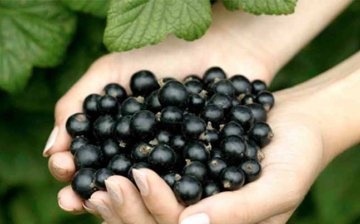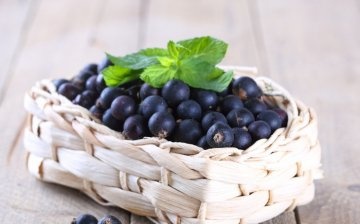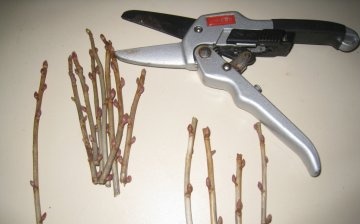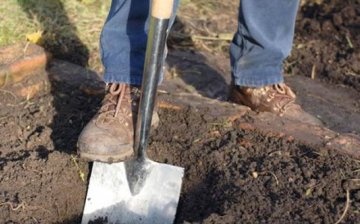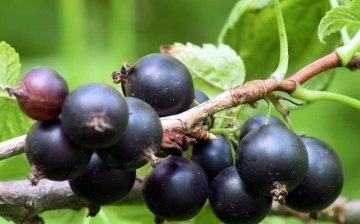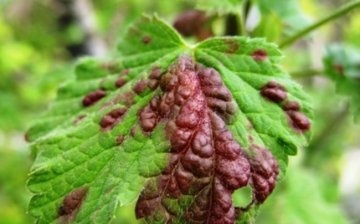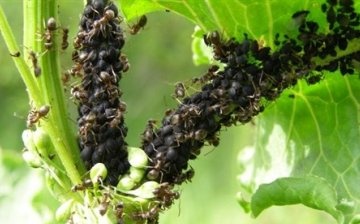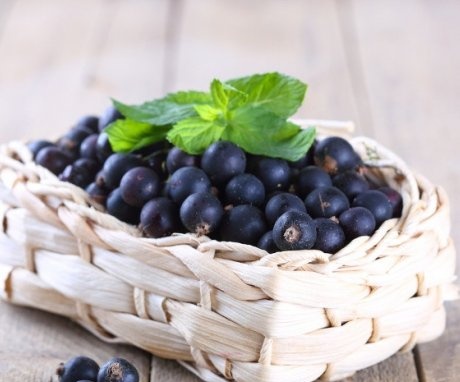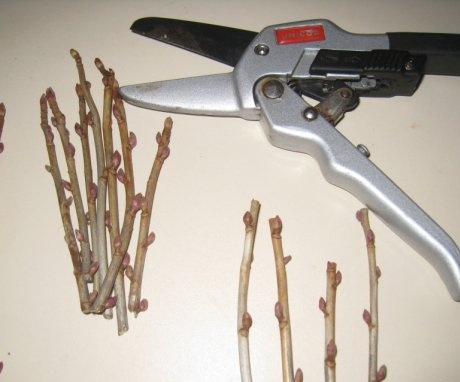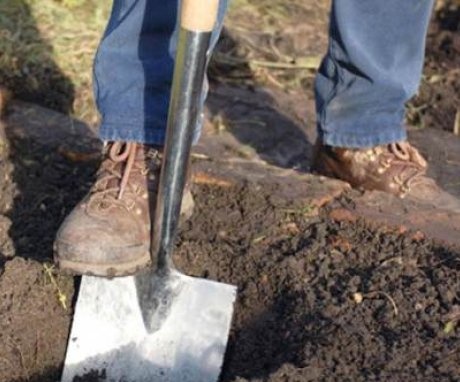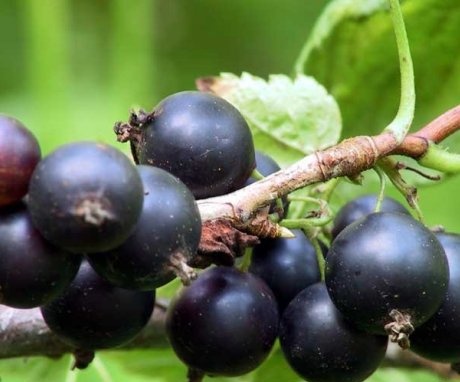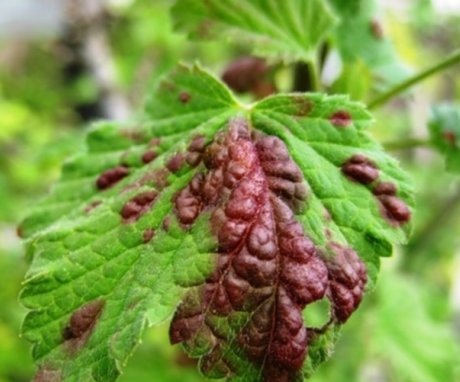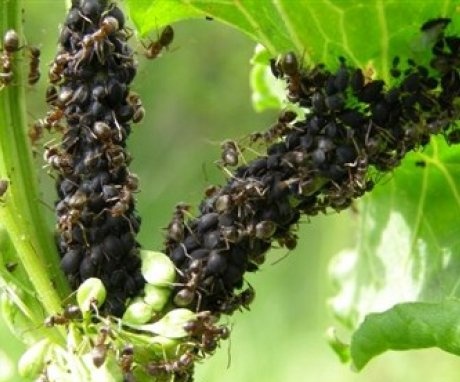Secrets of growing black currant: from planting to care
Black currant very often gardeners are planted on their plots. It is appreciated for its ease of care, high frost resistance, regular berry picking, and for its medicinal properties. Its berries and leaves contain all the trace elements a person needs.
Content:
- The best varieties to grow
- Reproduction methods
- Landing rules
- Care Tips
- Diseases of black currant
- Currant pests
The best varieties to grow
Blackcurrant varieties that have large berries:
- Vigorous. Fruit weight 3-8 g, they can be the size of a small plum. Ripening period is medium late. The currant is resistant to frost, to kidney mites, hazel grouses. From a bush, you can collect 3-6 kg of fruit.
- Venus. The berries are very large, weighing 2.5-6 g. Up to 6 kg can be harvested from one bush. The variety is resistant to powdery mildew and kidney mites, as well as excellent winter hardiness. Ripening period is early.
- Gulliver. Up to 7 kg are harvested from the bush. The berry weight is 3.2 g. The variety tolerates frost and drought well. He almost does not get sick with rust, powdery mildew, anthracnose, resistant to kidney mites. Ripening period is average.
- Dobrynya. It can give berries weighing up to 7 g. But currants need highly fertile land. The variety is resistant to powdery mildew, tolerates drought well, and has an average winter hardiness. Ripening period is average.
Sweet varieties of black currant. Varieties that have a sugar content of more than 10% are well suited for making jam and squeezing currant juice. These are the varieties:
- An excellent pupil. She has large berries with a slight sourness, sugar content 11.1%. The variety is moderately resistant to diseases and pests.
- Nina. Ripening period is early. The weight of the berries is 2–4 g. The sugar content is 9–11%. The variety has good frost resistance, medium powdery mildew resistance.
- Bagheera. The bush grows up to 1-1.5 m in height. The sugar content in berries is 9-12%. The variety is winter-hardy and drought-resistant. The mass of berries is 1.1-2.2 g. Berries begin to appear on the bushes one year after planting. Ripening period is average.
- Pearl. An average of 3-4.5 kg of fruit is harvested from one bush. Berry weight 1-6 g. Berries begin to appear in the second year of growth. Ripening period is early. It has good winter hardiness and drought resistance.
Reproduction methods
The main and effective way of propagation of black currant is vegetative propagation:
- Reproduction cuttings... From shoots that are 1 year old, cut branches 25 cm long, having a diameter of 6-9 mm. This is done with a sharp knife 1 cm above the bud, and even below, under the lower bud, a part of the branch is cut off with an oblique cut, then roots will grow between the buds and the cutting nodes. A pit is made, it is filled with rotted manure, garden soil and compost... Cuttings are planted in early spring, burying them 20 cm (3 buds should be visible above the soil surface), keeping a distance of 15 cm between the seedlings. Before planting cuttings, the soil is dug up and watered. After disembarking land mulch humus or peat with a layer of 5 cm. In the fall, the seedlings are transplanted to a permanent place.
- Reproduction by green cuttings.Find the green twigs, cut the stem 2 cm above the bud 2 cm above the bud with 4 leaves, below - slightly below the bud. When planting, cut off the leaves that grow from the bottom. Soak the cuttings in Heteroauxin for 24 hours. Plant the twigs in a greenhouse or under a film to a depth of 4 cm. For soil, take one part of peat, 1 part of sand and 1 part of compost. Spray the cuttings 5-6 times daily for 3 weeks. Shade the plants. You can remove the film in a month. In the fall, transplant the currants to a permanent place.
- Reproduction by layering. Dig in the 3-year-old cuttings from the mother currant. Lay the layering in ditches to a depth of 15 cm. Dig the ditches in the form of rays that extend from an adult currant. Sprinkle the layers with earth, mixing it from peat, compost, humus. Pin the layering with wire. In the fall, the cuttings will have roots. Separate them carefully from an adult bush. Transplant them to their permanent location next spring.
Landing rules
The best temperature for black currants is + 17-23 ° C, if it is hotter, then the growth of the plant becomes slower. In winter, they can withstand temperatures down to -20 ° C. Black currants prefer slightly shaded areas and can be planted close to houses and trees. Groundwater should be 1.5 m below the soil surface.
Currants prefer a place with good drainage and soil that has neutral characteristics.
Best to plant black currant in October. Dig a hole 40x40x40 cm in size.Pour 7 kg of rotted manure or ready-made compost into it, 200 g ash, 200 g of superphosphate. Add 7 kg of garden soil, mix well.
When planting, deepen the bush by 6 cm, then the currants will vigorously grow branches and new roots. Tamp the soil, pour 1 bucket of water under 1 bush. Next, mulch. After planting, cut off all the shoots, leave no more than 2-3 buds above the ground.
Care Tips
In order for black currant to please with a large harvest, it must be properly looked after:
- Weeding. Weeding is best done by hand using a hoe, and the grass is left near the seedlings.
- Loosening. Loosen the soil in the spring after fertilizing and in the fall after picking the berries.
- Mulching... Mulch the soil with a layer of humus, this will help prevent moisture from evaporating too quickly and stop growth weeds.
- Watering... Black currants love watering. Most of all, it needs water when branches and berries grow in summer, and even after picking berries in August and September, new flower buds are laid during this period of time. Currants are watered regularly. Under one bush, you need 20 liters of water when watering.
- Top dressing... If you added fertilizer to the planting pit, then the currants are fed only after 3 years. Pour 5 kg of humus or matured compost, 20 g of superphosphate, 20 g of potassium sulfate under one bush, in the fall, you can add half a glass of ash. In the spring, feed the currants with a solution of manure with water at a rate of 1: 8 or with a solution chicken droppings at the rate of 1:10 or herbal infusions. Pour 2 buckets of solution under the bush along the grooves, then fill in the grooves.
- Frost protection. In case of frost in the spring, you can put pots of water next to the black currant, wrap the currants with paper, cloth, film, and make a smoke screen.
- Pruning... For sanitary pruning, cut off diseased, weak shoots, as well as those that are more than 5 years old. The branches are cut in early spring, before the buds begin to swell, or in the fall. To form the currants the next year after planting, cut the shoots to the base, leaving the 5 most powerful ones. After another year, leave 4 shoots. Cut the fruiting branches a little so that they give side branches.
Diseases of black currant
Common diseases of black currant:
- Anthracnose. With a disease, small brown spots appear on the leaves, which grow, then the leaves dry out. The disease can also appear on the stalks, young shoots, petioles.
- White spot.There are small brown spots on the leaves. Then they turn white, but with a brown border. Black dots appear on the spots. When anthracnose or white leaf spot appears on black currants in April, the bushes are treated with Bordeaux liquid (1% solution) or 3% nitrafen solution. The treatment is repeated after 10 days. Then, in the middle of summer, the bushes are sprayed with Bordeaux liquid (1% solution). They also collect all diseased fallen leaves and burn them, dig up the ground near the trunk circle to a depth of 10 cm, do it in spring or autumn.
- Goblet rust. In case of illness, rusty growths are visible on the leaves. The disease can be transmitted from sedge. Therefore, you need to eliminate all sedge. The leaves are collected and burned. Before the buds bloom, the currants are treated with 1% Bordeaux liquid.
- Columnar rust. These are small rusty spots on the leaves. In the spring, even before the leaves bloom, the bushes are sprayed with 1% Bordeaux liquid. Then the same composition is sprayed after picking the berries. It is recommended to spray the leaves with phytosporin.
- Striped mosaic. With a disease, a grayish-yellow pattern is visible near the veins of the leaves. The disease is not cured, the infected bush is destroyed.
- Powdery mildew. There is a white bloom on berries and shoots. Then the color changes to brown, the berries crack. To treat the disease, cut out all diseased branches, spray the currants with a solution of 100 g of copper sulfate on a bucket of water. After 10 days, spraying is repeated. Spraying should be stopped 2 weeks before harvest.
- Terry. With doubleness, the outline of the leaves changes, instead of 5 they may have 3 blades. The leaf darkens and becomes denser, the bush blooms later, the inflorescences are lilac in color. To eliminate terry, a diseased bush is destroyed.
Currant pests
Not only people love to feast on currants, but also various pests. Therefore, it is necessary to know the "enemy in the face" and be able to deal with it:
- Currant aphid. To eliminate aphids spray the branches with a soap solution or rinse them. You can replace soap with ash, use 300 g per bucket of water. Make a solution of 3 tbsp. tablespoons of carbamide in a bucket of water, add potassium permanganate so that the solution is bright pink and process the bushes. If there are a lot of aphids, then spray with Aktellik, Karbofos, Vofatox.
- Firefly, glass and leaf gall midge. When the fire is damaged, the berries are entangled in cobwebs, they become reddish and dry out. If the ground is mulched with a layer of 8 cm, then the moth larvae will not be able to get out and die. To eliminate moth caterpillars, spray currant with "Aktellik", "Metaphos". Glassy larvae gnaw the core of the stems, and for the winter they make their way to the roots. A leafy gall midge is found if wrinkled leaves with small bulges are visible at the top of the branches. In early spring and autumn, to eliminate leaf gall midge and glassworm, cut out old and diseased branches at the very surface of the soil and burn them. Before budding, spray the currants with "Aktara" or "Iskra", add liquid soap there.
- Spider mite. At the beginning of May, red-brown or whitish leaves are visible, which have a cobweb below. To eliminate the pest, burn the leaves affected by the mite, and spray the bushes with insecticides.
- Kidney currant mite. These are tiny insects, they crawl inside the kidneys and eat them. To combat the pest, in early spring, cut and burn branches that show swollen buds. After flowering, treat the currants with a 1% aqueous suspension of colloidal sulfur.
- Shield. They can be found by the formations on the leaves - the shields that cover the pests. For elimination in early spring and late autumn, rinse the branches with a stiff brush dipped in a soap solution. Sprinkle currants with "Aktellik", "Fitoverm".
- Blackcurrant berry sawfly. Its larvae make their way into the fruit.The damaged berries are larger and have a ribbed shape. Collect the affected berries and burn them, mulch the ground, dig up the soil in the fall.
More information can be found in the video:



